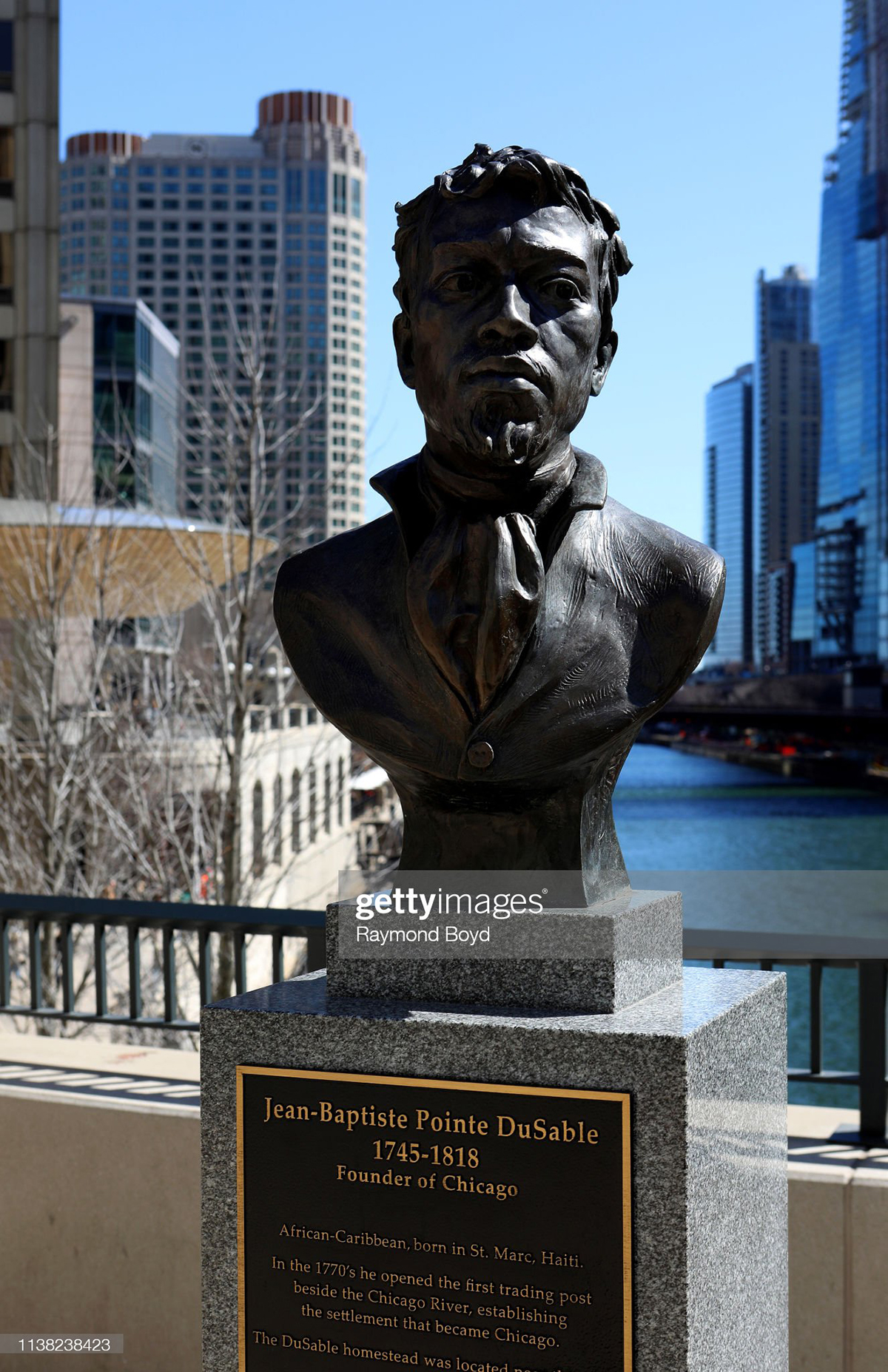Compiled By NAN Staff Writer
News Americas, NEW YORK, NY, Weds. June 8, 2022: Chicago’s earliest non-native permanent resident, today recognized as its founder, was an immigrant from the Caribbean.
Jean Baptiste Point du Sable was born in what is today known as Haiti, then
Saint-Domingue. He settled near the mouth of the Chicago River around the 1780s and married a Native American woman, Kitiwaha. They had two children. By 1790 he had established an extensive and prosperous trading settlement in what later became the City of Chicago. He sold his Chicago River property in 1800 and moved to the port of St. Charles, where he was licensed to run a ferry across the Missouri River. Point du Sable’s successful role in developing the Chicago River settlement was little recognized until the mid-20th century.
Today, a school, museum, harbor, park, bridge, and road have been named in his honor. DuSable High School opened in Bronzeville, Chicago in 1934. The DuSable campus today houses the Daniel Hale Williams Prep School of Medicine, and the Bronzeville Scholastic Institute. Margaret Taylor-Burroughs, a prominent African-American artist and writer, taught at the school for twenty-three years. She and her husband co-founded the DuSable Museum of African American History, located on Chicago’s South Side, which was renamed in honor of Point du Sable in 1968.
DuSable Harbor is located in the heart of downtown Chicago at the foot of Randolph Street, and DuSable Park is a 3.24-acre (1.31 ha) urban park in Chicago currently awaiting redevelopment. The project was originally announced in 1987 by Mayor Harold Washington. A park is also named after du Sable in St Charles, his other notable place of residence. The US Postal Service has also honored Point du Sable with the issue of a Black Heritage Series 22-cent postage stamp on 20 February 1987. And last year, The Chicago City Council voted to rename the city’s iconic Lake Shore Drive in honor of Jean Baptiste Point DuSable. It was unveiled in October 2021.










